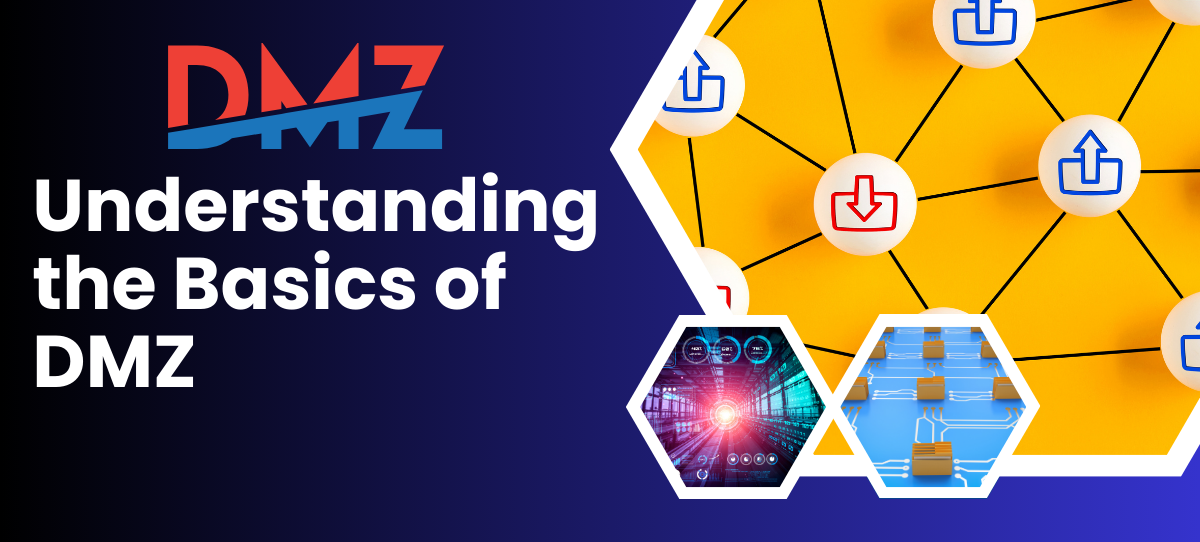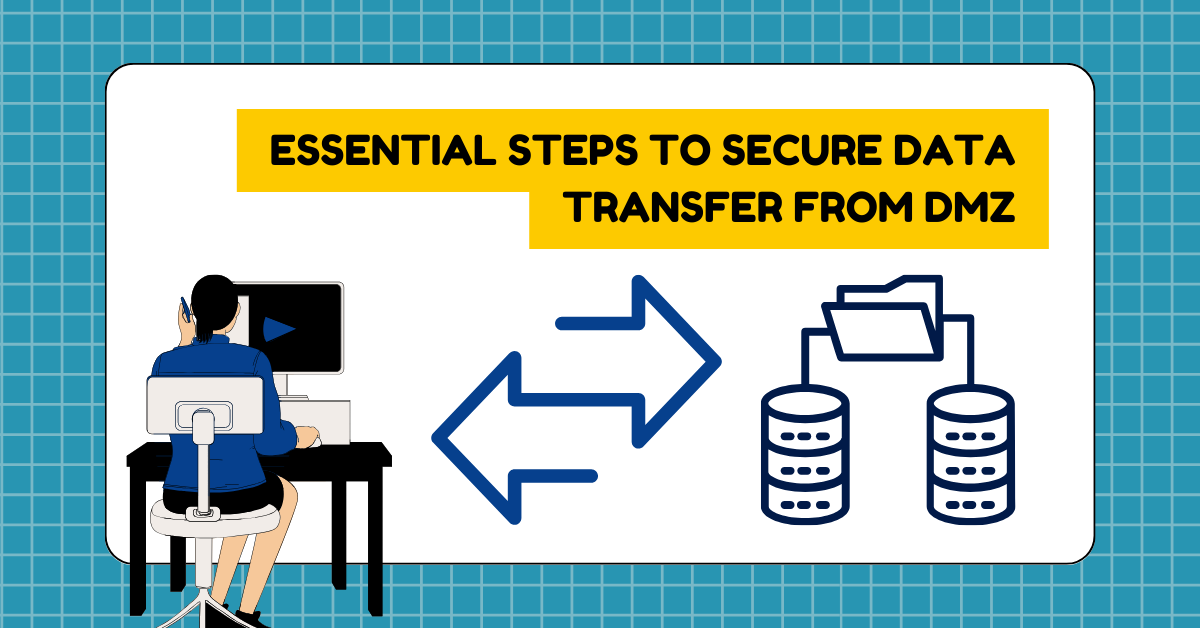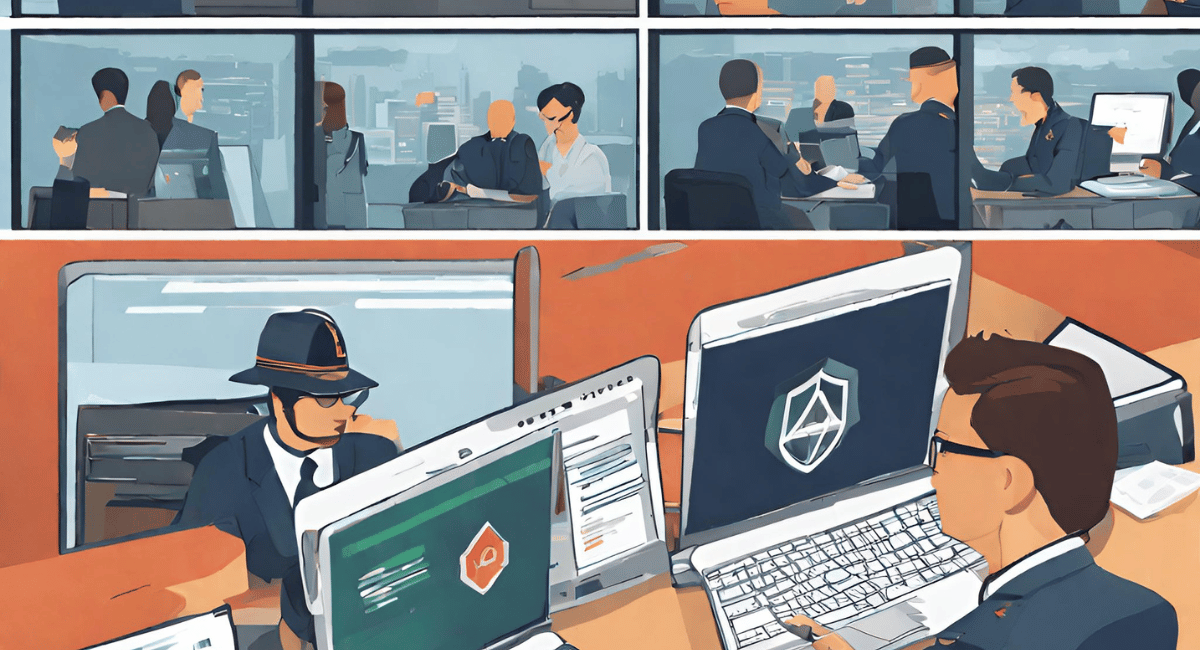To securely transfer data from the DMZ:
- Use encrypted protocols like SFTP or SCP.
- Employ a secure VPN tunnel.
- Implement data encryption at rest.
- Use a dedicated transfer system with logging and monitoring.
- Regularly patch and update software to mitigate vulnerabilities.
Always ensure compliance with security policies and best practices.
In the digital age, securing and transferring data without security breaches are critical to any company or individual. Understanding the proven precautions in securely transferring data, especially from the Demilitarized Zone (DMZ), a physical or logical component separate from the LAN network for enhanced security is imperative. We will delve into the measures that can ensure secure data transfer from DMZ.
Understanding the Basics of DMZ

What is DMZ?
IN NETWORKING TERMS, the DMZ, short for Demilitarized Zone, is a physical or logical subnetwork separating an organization’s local area network (LAN) from untrusted networks, typically the public Internet. The purpose of a DMZ is to add a layer of security to the LAN; hackers are directly exposed to the DMZ rather than any of the organization’s critical network components.
Implementing a DMZ involves careful planning and consideration of network architecture. The DMZ is strategically positioned between the internal and external networks, acting as a barrier that shields the internal network from potential threats. This separation ensures that any malicious activity occurring in the DMZ is contained and does not directly impact the internal network.
Within the DMZ, organizations commonly deploy servers that need to be publicly accessible, such as web servers, email servers, or FTP servers. By placing these servers in the DMZ, organizations can provide services to external users without compromising the security of their internal network. This setup allows the organization to control the information exposed to the outside world.
While there are various ways to implement DMZs, the most common method is to use one or multiple firewalls to control the traffic going to and from the DMZ. This way, if a malicious actor were to gain access to the devices in the DMZ, they would still be blocked by the firewall from accessing the LAN.
Why is DMZ Important in Network Security?
The DMZ provides numerous advantages to network security. Perhaps the most notable benefit is that it acts as a buffer zone between your internal and untrusted external networks. This distinct separation allows the organization to host public-facing servers within the DMZ while protecting the internal network.
By placing servers that require public accessibility in the DMZ, organizations can ensure that sensitive data and critical network components remain isolated from potential threats. This segregation minimizes the attack surface and reduces the risk of unauthorized access to the internal network.
Furthermore, the DMZ design improves security measures by limiting the exposure of the internal network to threats and by providing a way to monitor potential cybersecurity attacks. Network administrators can implement advanced security measures within the DMZ, such as intrusion detection systems (IDS) and intrusion prevention systems (IPS), to detect and mitigate suspicious activity. These systems act as an additional line of defense, continuously monitoring the DMZ for any signs of intrusion or malicious behavior.
Moreover, it provides a secondary defense: should the DMZ be compromised, the internal network should remain safe. Organizations can minimize the impact of a potential breach by implementing strict access controls and security policies within the DMZ. Even if an attacker manages to breach the DMZ, they would still need to bypass additional security measures, such as firewalls and authentication systems, to gain access to the internal network.
In conclusion, the DMZ plays a crucial role in network security by providing a secure zone separating an organization’s internal and untrusted external networks. It acts as a protective barrier, allowing organizations to host public-facing servers while safeguarding their critical assets. By implementing robust security measures within the DMZ, organizations can ensure the integrity and confidentiality of their internal network, mitigating the risks associated with cyber threats.
Essential Steps to Secure Data Transfer from DMZ

Implementing Firewall Rules
Firewalls are essential for controlling the traffic in and out of the DMZ. By stating which ports can receive incoming requests, they decrease the number of entry points for potential attackers. Moreover, they restrict outgoing traffic to reduce the potential for data leakage.
Implementing appropriate firewall rules can prevent unwanted and unauthorized access, detect and inhibit harmful traffic, and provide a vital first line of defense for your network.
Using Secure Transfer Protocols
Protocols such as SFTP (Secure File Transfer Protocol) or SCP (Secure Copy Protocol) that use encryption ensure that data is not readable if intercepted during transit. The use of these secure protocols is especially important when transferring sensitive data.
Likewise, HTTPS (Hyper Text Transfer Protocol Secure) encrypts the communication between the user’s browser and the server, protecting sensitive user information from being intercepted. Implementing and prioritizing such protocols can significantly reduce the risk of data breaches.
Encrypting Data
Encrypting data before transferring it provides one of the strongest defenses against security threats. Encryption works by converting the data into a code to prevent unauthorized access. Transferred encrypted data is useless to a hacker without the correct decryption keys. Together with other security measures, it significantly increases the security of data transferred from a DMZ.
Data encryption complements secure transfer protocols as it ensures that the data remains secure during the transfer and at rest. Encrypting data and using secure transfer protocols provides an extremely robust security framework.
The Risks Associated with Data Transfer from DMZ
Regarding data transfer from the DMZ (Demilitarized Zone), it is important to be aware of the potential security threats that can arise. While measures are put in place to protect the DMZ, it is not impervious to risks. Let’s explore some common risks involved in data transfer from the DMZ.
Potential Security Threats
One of the primary risks associated with data transfer from the DMZ is data breaches. Despite the best efforts to secure the network, sensitive data can always be stolen or compromised. These data breaches can have severe consequences, as stolen information can be sold on the black market or used maliciously.
In addition to data breaches, Distributed Denial of Service (DDoS) attacks pose another significant threat. These attacks overwhelm the network with traffic, causing serious service interruptions. The consequences can be detrimental, leading to loss of revenue, customer dissatisfaction, and even legal implications.
Malware infection is yet another risk associated with data transfer from the DMZ. Malicious software can infiltrate the network through various means, such as phishing emails or compromised websites. Once inside the system, malware can cause havoc, from data corruption to complete network control. The impact can be devastating, resulting in significant financial losses and a tarnished reputation.
Furthermore, unauthorized access to the DMZ can open the door to more serious intrusions into the internal network. If a malicious actor successfully breaches the DMZ and gains access to the internal network, they could potentially compromise the entire organization. This could lead to catastrophic outcomes, including the theft of intellectual property, disruption of critical services, or even the manipulation of sensitive data.
Consequences of Unsecured Data Transfer
Unsecured data transfer can have far-reaching consequences for an organization. From a financial perspective, it can result in substantial losses due to lawsuits, regulatory fines, or the cost of remediation efforts. The damage to a company’s reputation can be equally detrimental, leading to a loss of customer trust and a decline in business. In severe cases, these consequences can even push a company into bankruptcy.
From a technological standpoint, unsecured data transfer can lead to a cascade of problems. Downtime caused by a security breach can result in significant productivity losses and missed opportunities. Data loss can have long-lasting effects, especially if critical information is compromised. The recovery process can be time-consuming, resource-intensive, and expensive.
In extreme cases, data breaches can pose physical threats, particularly when the hacked systems control real-world infrastructure. The consequences can extend beyond financial and reputational damage, potentially impacting public safety and national security. It is crucial, therefore, to prioritize efficient security measures in all data transfers, especially those involving the DMZ.
In conclusion, understanding the risks associated with data transfer from the DMZ is vital for organizations. Businesses can mitigate potential risks and protect their valuable assets by implementing robust security measures, staying vigilant against emerging threats, and regularly updating protocols.
Best Practices for Secure Data Transfer from DMZ
Regular Security Audits

Regular security audits should be conducted to identify any potential vulnerabilities. These audits can help detect if there have been any changes in the firewall rules, review if there are any security patches, and ensure that the DMZ is effectively segregated from the internal network.
Security audits can reveal outdated systems that could make the DMZ vulnerable. Updating to the latest software versions, along with monitoring for and patching newly discovered vulnerabilities, is also a critical part of maintaining a secure DMZ.
Keeping Software and Systems Updated
An important practice in maintaining a secure environment is to ensure that all systems and software are updated promptly. Software developers regularly release patches that fix known vulnerabilities that hackers may exploit. Therefore, maintaining a regular update schedule helps to protect DMZ from being compromised.
In addition to regular updates, security tools such as intrusion detection systems (IDS), anti-virus software, and application safelists can help provide a more comprehensive protective layer around sensitive data.
Employee Training and Awareness
Employees are often the weakest link in a security chain. Ensuring they are aware of potential threats and follow secure data handling procedures can greatly reduce the risk of a security breach. Regular training sessions and practical guidelines boost employee self-efficacy in safely handling data.
Furthermore, fostering a company culture prioritizing security can ensure that all employees are vigilant and cautious when performing data transfers and, more broadly, utilizing company resources.
Case Study: Successful Secure Data Transfer from DMZ
The Challenge
A mid-sized financial institution struggled with maintaining a secure DMZ while enhancing its online services for customers. The bank wanted to implement a secure data transfer mechanism from the DMZ that was reliable and met regulatory compliance.
The Solution
After thoroughly evaluating their options, the institution implemented comprehensive security measures. They encrypted all sensitive data at rest and in transit, incorporated secure transfer protocols, and established strict firewall rules. Additionally, they educated their employees about the importance of these security measures.
The Result
As a result of these measures, the bank experienced no data breaches in the DMZ or the internal network. They documented all implemented measures as part of their risk assessment procedure, demonstrating their adherence to regulatory compliance. This also helped the bank preserve the trust of its customers and stakeholders by proving its commitment to data security.
This case study highlights that secure data transfer from the DMZ is achievable with thorough planning and strategic implementation of various defense mechanisms. Prioritizing security measures assists businesses in protecting sensitive data, ultimately safeguarding their assets and reputation.
Key Takeaways
- A DMZ is a network segment that acts as a buffer between an organization’s internal network and the public Internet.
- Always use encrypted transfer methods such as SFTP or VPN.
- Only authorized personnel should have access to data transfers.
- Regularly audit and monitor transfer logs for any anomalies.
- Maintain updated security patches and protocols to counter vulnerabilities.
FAQs
Q: What is the DMZ in network terms?
A: It’s a buffer zone between the internal network and the public Internet, adding an extra layer of security.
Q: Why is encryption important for data transfer from the DMZ?
A: Encryption ensures data confidentiality during transfer, preventing unauthorized access or eavesdropping.
Q: What encrypted methods are recommended for DMZ transfers?
A: Secure methods like SFTP (Secure File Transfer Protocol) or VPN (Virtual Private Network) channels.
Q: How can I detect unauthorized data transfers?
A: Regularly audit and monitor transfer logs, and set up alerts for suspicious activities.
Q: Should the DMZ be isolated from the internal network?
A: For security reasons, the DMZ should be segregated from the main internal network.
Conclusion
In conclusion, in today’s digital landscape, ensuring safe data transfers from the DMZ is paramount. The DMZ serves as a protective barrier between an organization’s internal network and external threats from the public Internet. To guarantee secure transfers, organizations must adopt encrypted protocols such as SFTP or VPN, consistently update their security protocols, and frequently conduct audits. By comprehending associated risks and applying comprehensive protective measures, businesses can shield their essential assets and uphold the confidence of their stakeholders.
